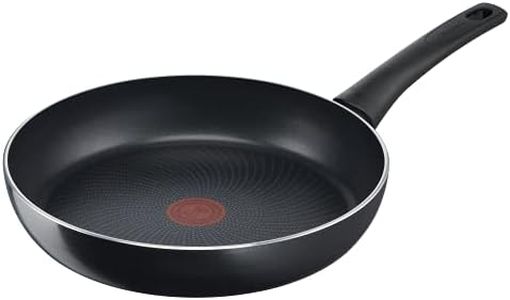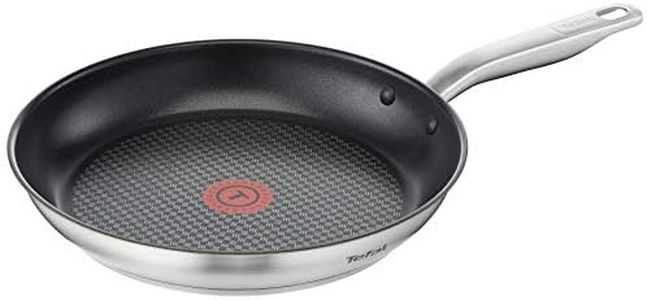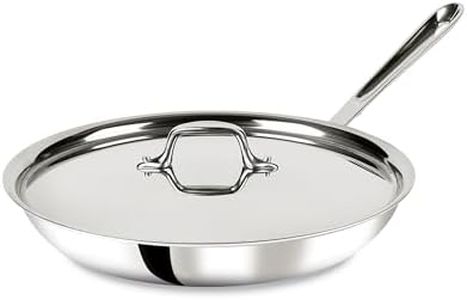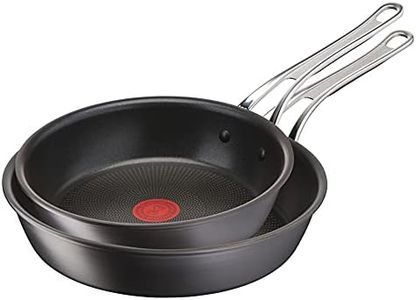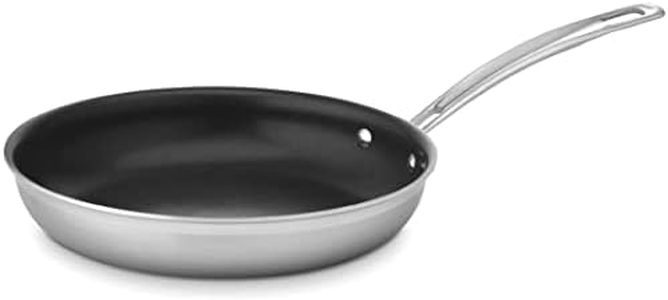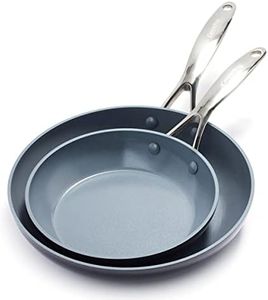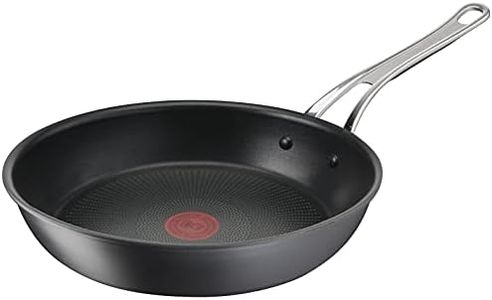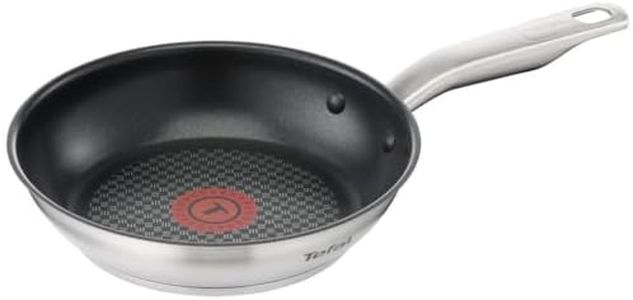We Use CookiesWe use cookies to enhance the security, performance,
functionality and for analytical and promotional activities. By continuing to browse this site you
are agreeing to our privacy policy
10 Best Induction Frying Pan
From leading brands and best sellers available on the web.Buying Guide for the Best Induction Frying Pan
Choosing the right induction frying pan can truly make your cooking more efficient, safe, and enjoyable. Induction pans are specially designed to work with induction cooktops, heating up quickly through a magnetic field. Picking the best one involves understanding a few key features so you can match the pan to your cooking habits and preferences.Induction CompatibilityInduction compatibility means the pan's base contains magnetic materials, often iron or some form of stainless steel, that allow it to heat up using induction cooktops. If a pan isn't induction-compatible, it simply won't work on these stoves. Some pans have a symbol on the base or packaging showing they are suitable for induction. To check at home, you can use a magnet—if it strongly sticks to the bottom, it’ll work. For best performance and safety, always make sure any pan you consider is labeled as induction-compatible.
MaterialThe material of the frying pan affects how it heats, how easy it is to clean, and how food tastes or browns. Common options are stainless steel, cast iron, and non-stick coated pans. Stainless steel is durable and great for browning, but may need some oil to prevent sticking. Cast iron holds heat well and is perfect for high-heat searing, though it's heavier and requires seasoning. Non-stick pans are easy to clean and work well for low-fat cooking but can wear out over time. If you fry a lot or want easy cleanup, consider non-stick; for serious searing or versatile use, look into stainless steel or cast iron.
Size and ShapeSize usually refers to the diameter of the pan and is typically measured in centimeters or inches. Common frying pan sizes range from about 20 cm (8 inches) for single servings or eggs, up to 30 cm (12 inches) or more for family meals. Shape can mean the height of the sides or whether the pan is flat or slightly curved. Choose a size based on your usual portions: a smaller pan for solo cooking, a medium for couples or small families, and large pans for batch cooking or big families. Higher sides are good for dishes with more liquid, while lower sides work well for quick frying.
Weight and Handle ComfortWeight affects how easy a pan is to maneuver, especially when tossing food or pouring sauces. Heavy pans, like cast iron, offer stable heating but might be hard to lift or tilt, especially when full. The handle should feel sturdy and cool enough for comfortable grip. Some handles are hollow or coated to stay cooler. If you prefer easier handling or have wrist concerns, look for a pan that feels light enough but still solid, and grips that fit your hand comfortably.
Base ThicknessThe thickness of the base determines how evenly the pan heats and how well it retains that heat. A thicker base spreads heat better and prevents hot spots that can burn food, while a thin base heats up faster but might result in uneven cooking. Thin pans are lighter and cheaper but might not perform well on high-heat induction stoves. For all-around cooking, a medium to thick base is best as it balances heating time and temperature consistency—great for most everyday cooks.
Oven-Safe FeaturesMany induction pans can also be used in the oven, letting you start dishes on the stove and transfer to the oven. The key point is the pan’s handle and any non-stick coating—they must withstand oven temperatures. If you plan to finish omelets, frittatas, or sear-and-roast recipes, check the maximum temperature the pan can handle safely in the oven. If you never put pans in the oven, this might not matter for you.
Ease of CleaningSome pans are dishwasher-safe, while others require hand washing. Non-stick and most stainless steel models are usually easier to clean, whereas cast iron might need special care like wiping and oiling. If saving cleanup time is a priority, look for pans marketed as dishwasher-safe or with easy-clean finishes. For those who enjoy the ritual of pan care and have more time, traditional materials like cast iron could be a good choice.
